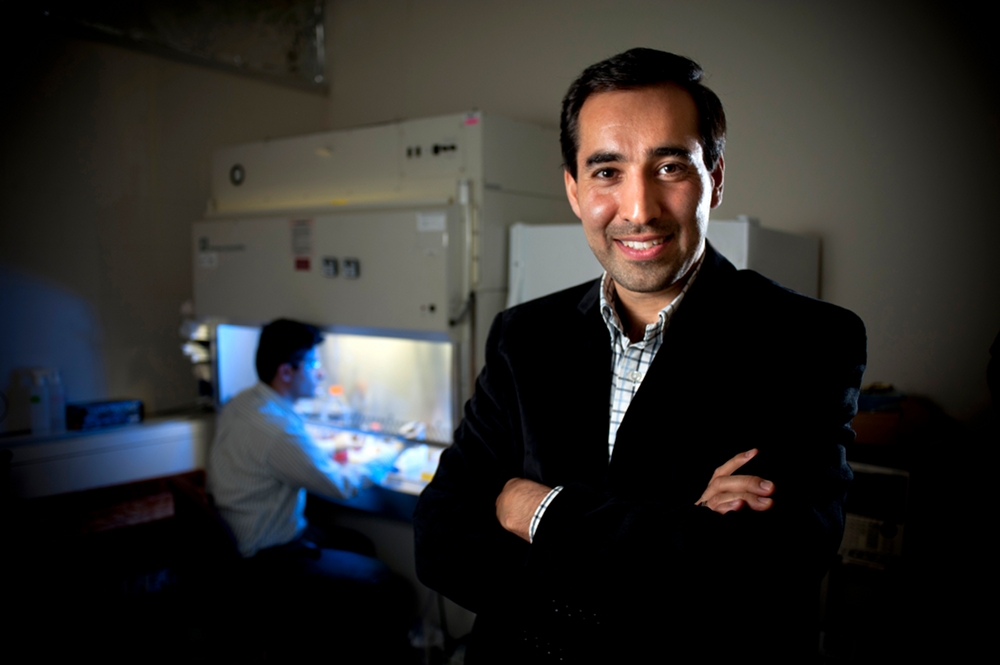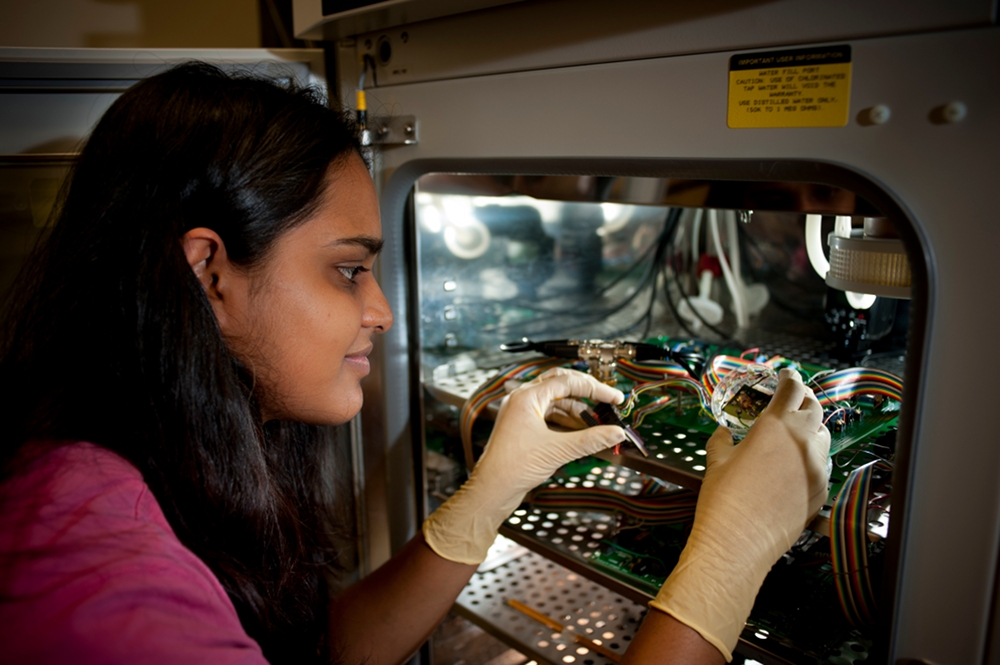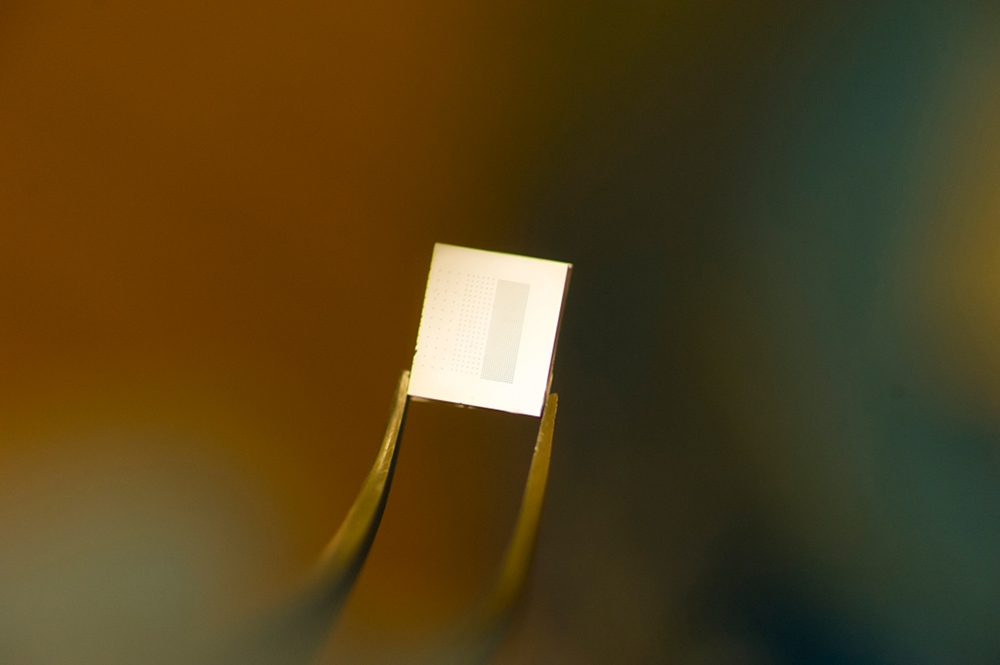Small Devices Show Big Potential

This ScienceLives article was provided to LiveScience in partnership with the National Science Foundation.
Micro-electromechanical systems, or MEMS, can range in size from below micrometer or submicron scale to the millimeter level. Researchers like Masoud Agah of Virginia Tech, are exploring the global-scale applications of these tiny systems. Agah heads the VT MEMS Lab, where research currently centers on the development of micro gas analyzers for environmental and healthcare applications, and biochips for cancer diagnosis and monitoring cancer treatment. Recently, the journal Biomaterialsselected an image from Agah's work with collaborators for its Year in Images poster. The image shows the adhesion of cancer cells to fabricated microstructures. Read more about Agah's research here, and below read his responses to the ScienceLives 10 Questions.
Name: Masoud Agah Age: 36 Institution: Virginia Tech Field of Study: Electrical Engineering, MEMS and Microfluidics
What inspired you to choose this field of study? In high school, I was good at math and physics. I still remember the time I spent reading textbooks in these areas and the days I spent solving problems. That gave me enough inspiration to go to engineering school for my higher education despite the fact that medical school was more popular in Iran at the time. I also had a great opportunity to be part of the NSF-funded Engineering Research Center in Wireless Integrated MicroSystems (WIMS ERC) at the University of Michigan for my Ph.D. work. This unique center shaped my interests and improved my interdisciplinary teamwork skills, preparing me to take on challenges and risks in emerging technological fields.
What is the best piece of advice you ever received? There are several examples from both my personal life and professional life. I'll share the one I received from my Ph.D. advisor, Ken Wise, who is one of the pioneers of the MEMS field and also served as the WIMS ERC Director. After I finished my Ph.D. and I was ready to join the faculty at Virginia Tech, he advised me not to be worried about my career and the potential stresses that faculty positions and the tenure process could create. He said opportunities present themselves and I can initiate new research endeavors, some I might have never thought of.
What was your first scientific experiment as a child? The ones I remember are growing a plant from a seed in a small pot and making a tin can telephone.
What is your favorite thing about being a researcher? You don't know what happens. You explore the unexplored, think out of the box, think as a team, share with a team, and positively impact global society.
Get the world’s most fascinating discoveries delivered straight to your inbox.
What is the most important characteristic a researcher must demonstrate in order to be an effective researcher? When I talk to prospective students who are interested in joining my group, I always tell them that being a researcher working toward a Ph.D. degree is not easy. Things don't always go as planned on paper and as predicated on simulators. The key is "not giving up" during times of frustration. The joy comes eventually.
What are the societal benefits of your research? My research at VT MEMS Lab is mainly focused on the environmental and biomedical applications of MEMS. One of my research areas, one that is thrust-in at the intersection of chemistry and engineering, is to develop microstructures that sense and identify compounds present in a complex gaseous mixture. This research has applications in environmental monitoring, public safety and homeland security. The other thrust area integrates engineering and biology to enhance our understanding of the physics of cancer cells and their interaction with artificial microenvironments. This will help us to engineer microdevices for cancer diagnosis and drug screening.
Who has had the most influence on your thinking as a researcher? My family had the most influence on me and helped me to grow and find my way. My dad, who I lost when I was 12, paid critical attention to my early education. My mom was the person who sacrificed a lot to ensure that I would get the best education possible and encouraged me to continue on this path.
What about your field or being a researcher do you think would surprise people the most? That you can work on cancer while being an electrical engineering professor. When I present a lecture to high school students or college freshmen, I have seen first-hand how they are surprised when I tell them about our research findings on cancer.
If you could only rescue one thing from your burning office or lab, what would it be? My laptop or computer.
What music do you play most often in your lab or car? If the opportunity comes, I listen to traditional Iranian music.
Editor's Note: This research was supported by the National Science Foundation (NSF), the federal agency charged with funding basic research and education across all fields of science and engineering. Any opinions, findings, and conclusions or recommendations expressed in this material are those of the author and do not necessarily reflect the views of the National Science Foundation. See the ScienceLives archive.






